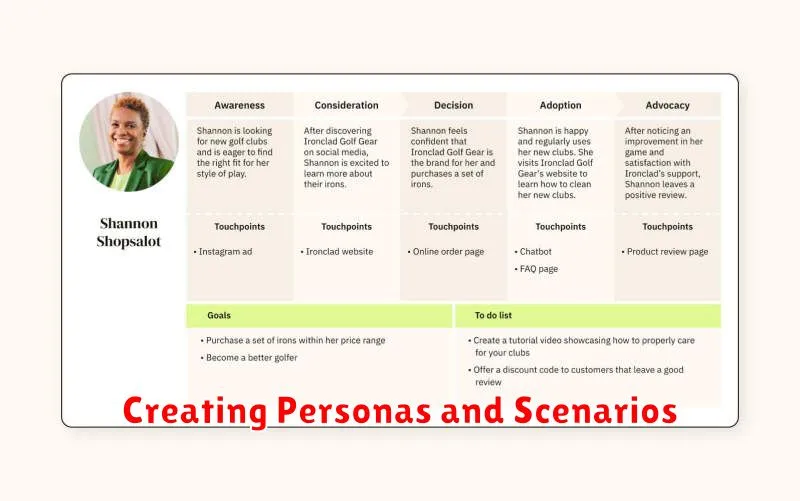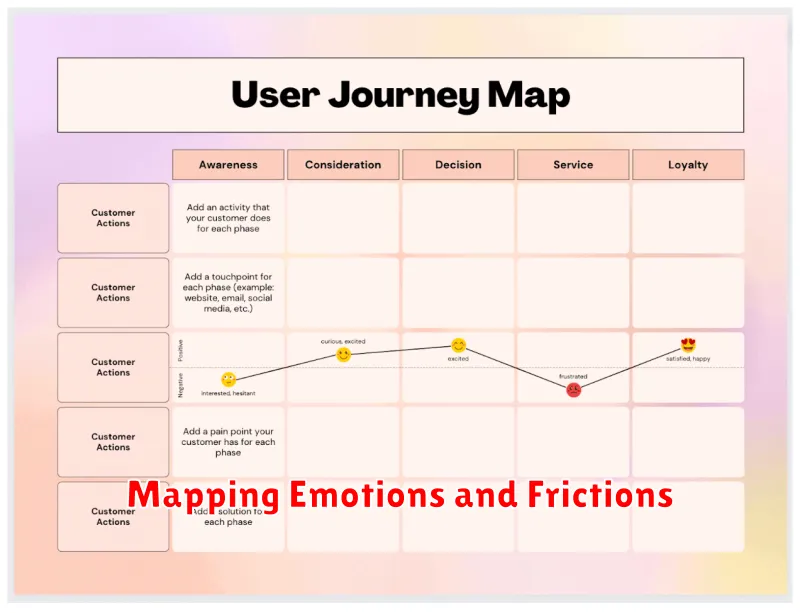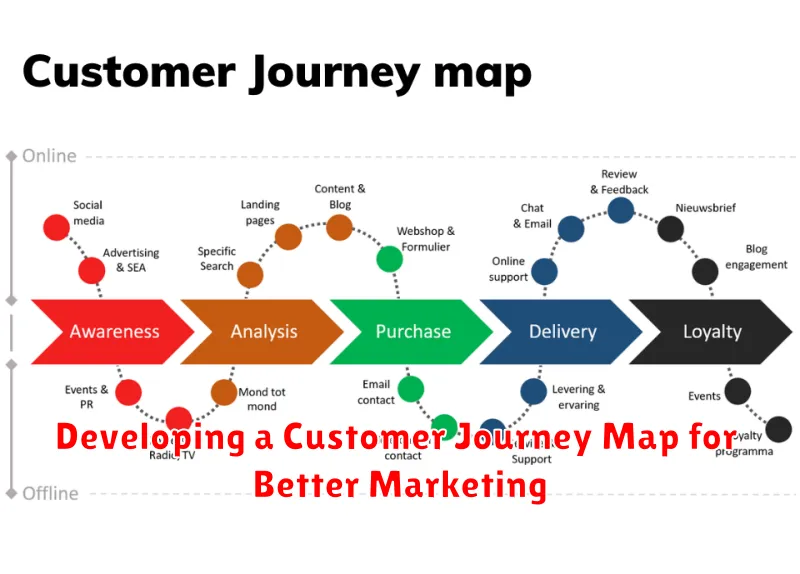In today’s competitive market, understanding the customer journey is paramount to successful marketing. A customer journey map is a visual representation of all the touchpoints a customer has with your brand, from initial awareness to post-purchase engagement. Developing a comprehensive customer journey map allows businesses to gain valuable insights into customer behavior, pain points, and motivations. By meticulously mapping out each stage of the customer experience, marketers can identify opportunities to optimize their marketing strategies and enhance customer satisfaction, ultimately leading to increased conversions and customer loyalty. This invaluable tool enables businesses to effectively target their marketing efforts, personalize the customer experience, and ultimately drive business growth.
This article will explore the key steps involved in developing an effective customer journey map for your business. We will delve into the process of gathering customer data, defining customer personas, and identifying the various touchpoints that constitute the customer journey. Furthermore, we will discuss how to analyze customer behavior at each stage, pinpoint areas for improvement, and implement targeted marketing strategies to optimize the customer experience. By the end of this article, you will possess the knowledge and tools necessary to create a customer journey map that will empower you to enhance your marketing efforts, build stronger customer relationships, and achieve sustainable business success. Understanding your customer journey is no longer a luxury; it’s a necessity for any business seeking to thrive in the modern marketplace.
What is a Customer Journey Map?
A customer journey map is a visual representation of the process a customer goes through to achieve a goal with your company. It illustrates all the touchpoints a customer has with your business, from initial awareness to post-purchase engagement.
This map outlines the customer’s actions, thoughts, and emotions at each stage of their interaction. It provides valuable insights into the customer experience, highlighting pain points and areas for improvement.
By understanding the customer journey, businesses can optimize their marketing strategies, improve customer satisfaction, and ultimately drive business growth.
Identifying Key Touchpoints
Touchpoints represent every interaction a customer has with your brand throughout their journey. Accurately identifying these touchpoints is crucial for creating an effective customer journey map.
Consider both direct and indirect touchpoints. Direct touchpoints involve active interaction, such as visiting your website, contacting customer service, or making a purchase. Indirect touchpoints involve passive encounters, like seeing an advertisement or hearing word-of-mouth referrals.
To comprehensively identify touchpoints, consider brainstorming from the customer’s perspective. Start by listing all potential interactions from initial awareness to post-purchase. Then, categorize these touchpoints into different stages of the customer journey.
Examples of Touchpoints:
- Social Media Advertisements
- Website Visits
- Online Reviews
- Email Interactions
- In-Store Experiences
- Customer Service Calls
Creating Personas and Scenarios

Developing effective customer journey maps hinges on understanding your target audience. This understanding is best achieved through the creation of personas and scenarios. A persona represents a fictional, yet realistic, representation of your ideal customer. It embodies their demographics, motivations, goals, and pain points.
Scenarios, on the other hand, depict how a persona would interact with your brand across various touchpoints. A scenario outlines a specific situation and describes the steps a persona would take to achieve a goal, highlighting their interactions with your product or service.
By combining personas and scenarios, you gain valuable insights into customer behavior and expectations. This allows you to tailor your marketing efforts and optimize the customer journey for increased engagement and conversion.
Mapping Emotions and Frictions

A crucial aspect of customer journey mapping involves understanding the emotional landscape and potential friction points customers encounter throughout their interaction with your brand. Emotion mapping pinpoints the feelings a customer experiences at each touchpoint, from initial awareness to post-purchase interaction.
By visualizing these emotions, you can identify moments of delight, frustration, or indifference. This understanding allows for targeted interventions to amplify positive feelings and mitigate negative ones.
Friction mapping, on the other hand, focuses on identifying obstacles or pain points that hinder a seamless customer experience. These frictions can range from complex website navigation to lengthy checkout processes.
Documenting these frictions alongside emotional responses provides a comprehensive view of the customer journey, highlighting areas for improvement and optimization.
Improving Conversions with Journey Insights
A well-defined customer journey map provides invaluable insights that can significantly improve conversion rates. By understanding the customer’s experience at each touchpoint, marketers can identify and address pain points, optimize key interactions, and ultimately drive more conversions.
Analyzing journey data reveals areas where customers might be dropping off or encountering friction. For instance, a complicated checkout process or unclear call-to-action can hinder conversions. Addressing these issues by streamlining the process or clarifying the message can lead to a measurable uplift in conversion rates.
Furthermore, journey insights help personalize the customer experience. By understanding customer preferences and behaviors at different stages, marketers can tailor messaging and offers, making them more relevant and compelling. This targeted approach increases the likelihood of conversion by delivering the right message at the right time.
Testing different strategies at various touchpoints based on journey data is crucial for optimization. A/B testing different calls-to-action, adjusting messaging, or refining the user interface based on journey insights helps determine the most effective approach to drive conversions.

